Today’s entry is for the John Huston Blogathon, hosted by Adam at Icebox Movies, running from August 5th through 12th. Both the submissions and Adam’s own entries have been exceptional thus far, and more are coming in the days ahead. I highly recommend checking them out!
***
Nobody likes “In This Our Life” (1942). Oh sure, some people enjoy the camp, or like it because Bette Davis plays such a rotten woman, but that’s as far as it goes. I found some really unfortunate reviews of ITOL online, reviews that had major facts wrong, that described the movie as “icky” or “just okay” or even “obnoxious”, that repeated long-discredited rumors about cameos. ITOL doesn’t get a lot of respect, and I — self-appointed champion of the underdog — wanted to change that.
About the cameos: There are no cameos in this film save Walter Huston as a bartender. I’ve got a screencap of the guys in the bar, people, so don’t push me on this.
ITOL is not a bad film, but it is an odd film, as it’s supposed to be a melodrama in the midst of the languid American South, not like you would realize this without being told. No one bothers with a Southern accent save Billie Burke, and the exterior shots of the house are so unconvincing they look as though they were shot for a New England area film like “Arsenic and Old Lace” instead. It’s undeniably a standard Warner Bros. film, albeit one directed by a decidedly new director that WB had not seen before, and with a handful of performances and plot points that were quite progressive for the day. According to Jeanine Basinger, the noted film critic who provides the DVD commentary, it was the idea of a black man being taken seriously that made him decide to do the script, and I suspect Huston was intrigued by the naughty nature of the incestuous relationship between Stanley and her rich uncle William.
Stanley (Bette) is engaged to Craig (George Brent) but decides to run off with her sister Roy’s husband instead. Roy (Olivia de Havilland) is responsible, calm, and even a little meek at first, and the relationship between the two sisters mimics the divide throughout the entire family. Stanley, her mother, and her uncle William (Charles Coburn) are the selfish side of the family, to varying degrees and for varying reasons. Roy and her father Asa are the calmer, more philosophical side. William has taken the family business from his brother Asa through ruthlessness and greed; Stanley has taken Peter from her sister in the same way.
Stanley is bad. One of the best parts of the DVD commentary track is Ms. Basinger’s “Oooh, she’s sooooo bad!” at Stanley’s antics. Indeed, Stanley is so bad that, after she drives Peter to suicide, she returns to the family home and decides to steal Craig back now that he is Roy’s partner. The family employs a black maid, Minerva (Hattie McDaniel), whose son Parry (Ernest Anderson) helps around the house and in Roy’s shop, but is also studying to be a lawyer. When Stanley drunkenly runs over a mother and her child, she blames Perry. Yeah, that’s bad.
No discussion of ITOL is complete without mentioning Bette Davis’ appearance. Many comment on her garish outfits, but I have to say I love the patterned dress she puts on the day she decides she won’t wear mourning black anymore. Much is also made of Bette’s makeup, and I think the people who criticize it are (a) not familiar with Bette’s look from her early WB days and (b) old fuddy duddies. Many call the makeup “heavy”. Pfft. You think that’s heavy, go watch her in “Fashions of 1934”. But the makeup is just a little trampy. It’s designed to attract men. The wide eyes made larger, massive curled lashes, the eyebrows slightly higher, the lips made fuller yet narrowed into a bow.
For a little comparison, see her iconic look in “Jezebel” (both pictures courtesy Dr. Macro):
I think the ITOL look is marvelous.
John Huston was told by the studio to tone Bette down. Huston refused. He was fascinated by Bette’s performance and knew she had it under control. At the same time, Huston balanced Bette by focusing on the meeker sister in closeups and making sure to include at least two actors in every shot. There is very little back and forth editing from face to face during discussions, and Bette’s performance really does work well in the context of a typical Huston ensemble piece. But Bette wasn’t happy with the movie. She had been sick during the filming, catching the same virus that made her husband violently ill and exacerbating it with overwork and long hours. She didn’t like ensemble pieces and several at WB claimed she was livid because de Havilland got all the closeups, although Bette liked and respected de Havilland, so her jealousy may be more anecdotal than anything.
It should be noted that this was Ernest Anderson’s first film, and his performance is unquestionably one of the highlights. It’s a realistic performance, grounded and honest, and the scene where he is in jail is undeniably great. He steals the scene, so much so that Bette modifies her performance to match his, and poor George Brent is completely forgotten. Anderson’s career was sadly typical for an actor of color, as after ITOL he immediately went on to small roles of porters, valets, and the ubiquitous “black man”. It’s sad, and none of the usual classic film buff excuses of “but it was a different time back then” makes it better. Yeah, it was a different time. It was a sad time, and pretending like it didn’t happen now, when we all allegedly know better, makes it worse.
Ted Naron at A Blog of My Own talks about Anderson and ITOL in an excellent blog entry I highly recommend. Ironically, Ted notes that there are precious few pictures of Anderson on the web, and of course I lost my single screencap of Anderson when my lack of organizational skills caught up with me. I hope Ted forgives me for borrowing one of his screencaps.
The Huston blogathon is about Huston and the underlying question: Was Huston an auteur? If one is looking for an answer to the auteur question, ITOL is probably the worst Huston film to pick, as some scenes were directed by Raoul Walsh when Huston went off to war. That said, I don’t subscribe much to the auteur theory, although I respect it as a critical philosophy. To me, the idea that art requires a single author/creator to be considered art, as Film Reference explains the theory, seems absurd. There is no need to ascribe a single author to works of collaborative art. Further, in regards to movies, you can find unifying themes and styles between movies by following many of the significant players. You can find similarities in Huston films, but also in Bette Davis films, Howard Koch films, Ernie Haller films, or even Warner Bros. films.
That’s where I think “In This Our Life” fits in Huston’s oeuvre, as a collaborative effort of Warner Bros. actors and crew under the direction of someone relatively new to the field of filmmaking. The years between “The Maltese Falcon” and “Treasure of the Sierra Madre” were years where Huston was clearly experimenting. Someone on Usenet once dismissed ITOL as Huston “playing around,” but I disagree. This was a man playing with perceptions, already discovering how to best utilize strong personalities and balance them with more moderate screen presences. George Brent, who spent most of his career on screen being bland, momentarily breaks the ol’ stoneface routine when he’s trying to explain why it’s okay that Stanley is lying about the accident. He can’t explain why, and for once you see Brent act out the emotional process on his face: That’s Huston.
Remember, though, it’s all collaborative. Huston could not have achieved that unless he had Brent’s years of experience and specific acting style. Huston seems to have often let his actors go on their own, relying on their abilities rather than trying to hammer them into something different a la Preminger, so maybe he wouldn’t have fit the definition of auteur anyway.
Our blogathon host Andy at Icebox Movies says as much: “He has never been regarded as much of an auteur: Andrew Sarris and Molly Haskell don’t care much for him, nor did Truffaut and Godard. His career is not dominated by one single auteristic theme, unless you could try to make a case for ‘male angst’.” That passage is not only true, but it highlights another problem I have with the auteur theory: That a director should strive to be an auteur, that being such means one has reached the pinnacle of their career. For critics like Truffaut to dismiss Huston in part because he was not an auteur is missing the point of collaborative art, and it’s exceedingly unfair.

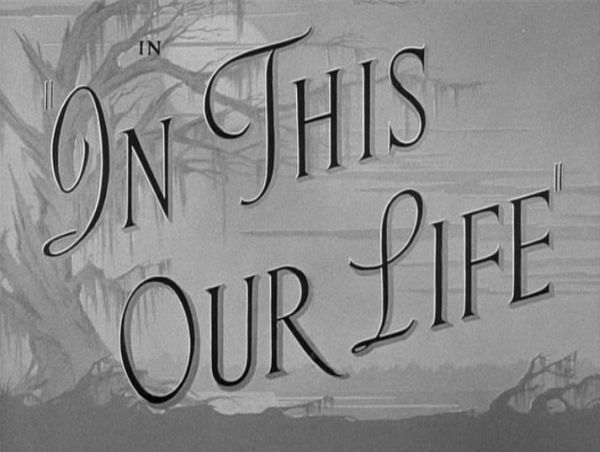
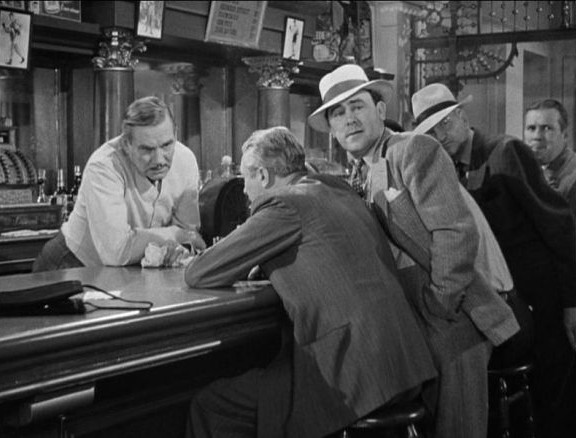

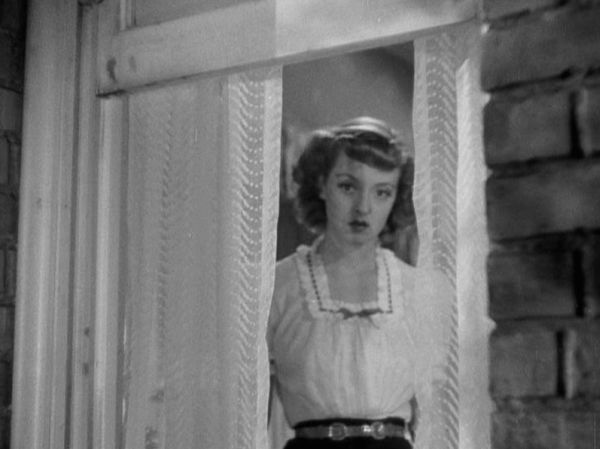
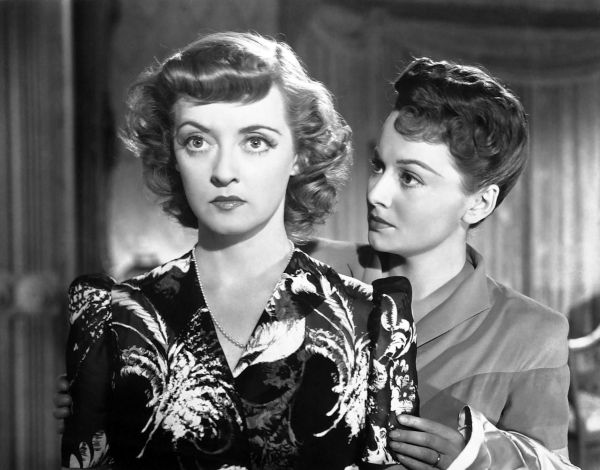
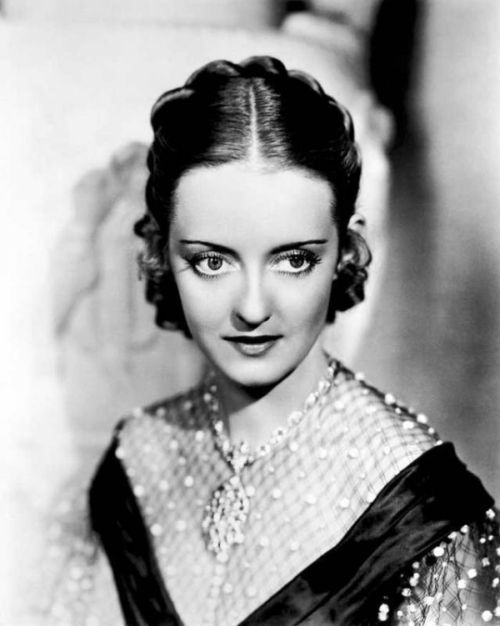
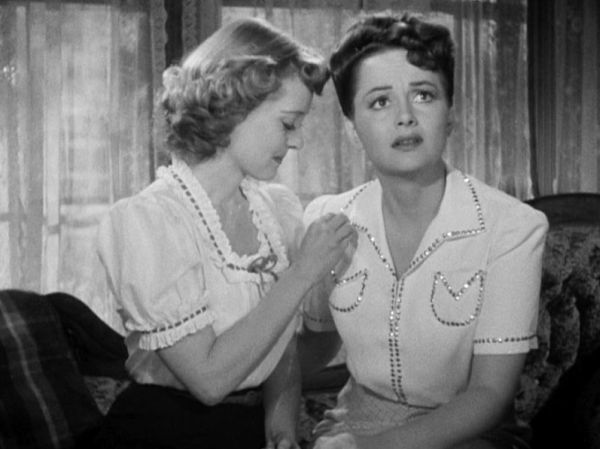
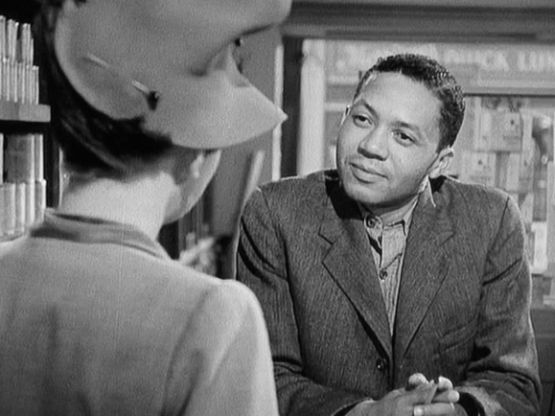
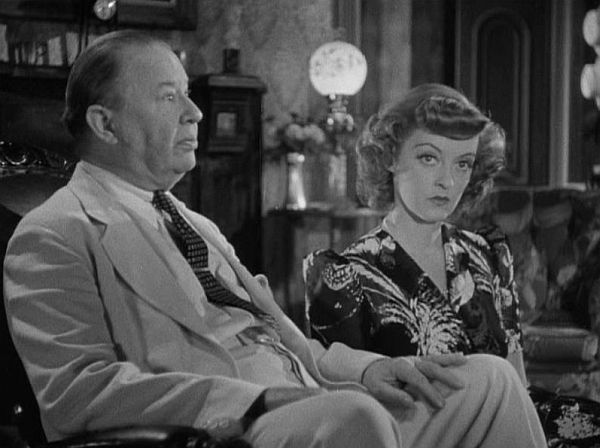
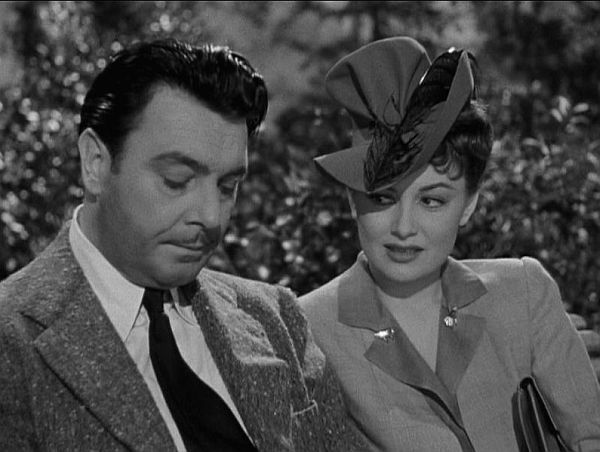
While I’ll be the first to admit that I don’t worship at the altar of Bette, ITOL is one of my favorites of her films. Really outstanding writeup on this one, Stacia.
Yes, an odd film. Bette Davis does act up a storm, doesn’t she? I personally don’t care for her here, as I prefer Olviia de Havillland.
But as you’re right, it’s not a bad film and the story does move to its proper finale. It does have its charms.
Jeanine Basinger’s commentary is excellent (as it is on other DVDs, including Laura).
I love that movie. I was really hesitant about seeing it but Bette Davis is terrific. Yes it’s campy, but a movie can be campy and still be a good movie. You could argue that all of Bette Davis’s great movies are campy.
What a great review, Stacia – I liked ‘In This Our Life’ a lot and was surprised to see how dismissive many of reviews of this movie are. I love Bette’s performance in this even if it is a bit over the top – or maybe I love it because of that! Especially like your comments on Ernest Anderson’s role in the movie – sadly I remember reading that some of his scenes, and Hattie McDaniel’s, were cut out by censors before the film could be shown in the South. I’ve only seen it on TCM up to now but do have the DVD in a Bette box set and will look forward to seeing it again and listening to the commentary by Basinger – I’ve also been meaning to read the novel by Ellen Glasgow.
Although Huston never confessed to this, I have a sneaky feeling why he ended up making In This Our Life: because he might have empathized with the Stanley character and the crime she commits. The incident in which Huston accidentally ran over a pedestrian on the road in the early 1930’s is something he talks about in his book, and he talks about In This Our Life in the following chapters (“I never cared for it”), but, disappointingly, he never links the two experiences together. Does the DVD commentary ever make mention of Huston’s real-life accident and how it eerily seems to correspond with the movie’s plotline? I’ve only caught In This Our Life on TCM, so I have yet to look at that DVD; I’m actually surprised that the DVD has a commentary track at all! Now if they could just record a track for Fat City, everything would be A-OK…
I don’t really think In This Our Life is a great film–aside from the empathies that I still suspect Huston shared with Davis’ character, it’s basically a studio picture for which much of Huston’s artistic control was under limits. Still, all the same, I’m fond of the film as a whole. Of the performances, I probably share Tom’s viewpoint that Olivia de Havilland is stronger here; there are times when Davis maybe overdoes the villainy. But the selfishness of the richer characters, as you’ve written here, Stacia, truly does involve one emotionally in the story. The scene where Coburn’s uncle is suddenly distraught because he’s going to die of cancer and then Stanley yells at him because he’s ignoring her own catastrophe is one of the film’s highpoints. Or when Billie Burke’s mother foolishly refuses to believe that Stanley could be lying. I also vaguely recall a sequence in which George Brent is with either Davis or de Havilland (I forget which), and they see a forest fire out in the distance… I don’t remember the significance of this particular sequence, but I remember it being haunting for some reason. And, of course, that scene in which poor Ernest Anderson angrily mutters that “it ain’t no use for colored people in this world”. Osborne of TCM once told a story that when Robert Aldrich was trying to cast for the ice cream man in Whatever Happened to Baby Jane, Bette Davis immediately told him, “find Ernest Anderson!” But it’s sad how that ice cream man role was just another one of those kinds of stereotyped roles that Anderson (and, alas, Hattie Macdaniel) were doomed with late in their careers.
So even though In This Our Life might not be one of Huston’s best efforts, it’s certainly a good movie worthy of attention. Thanks a bunch for writing up on it, Stacia!
I love this movie too, thanks for your article. You didn’t mention the wonderful Max Steiner’s archetypal Warner score. The music build up in the last scene and end credits is a swoon. I remember shooting to the CD store right after having had discovered the movie on TV long years ago : I still listen its lush flow from time to time.
I do forgive you!
Great post, Stacia.
–Ted
Every time I see a Max Steiner score in a Bette film, I think about that story where Bette was about to walk up the stairs in “Dark Victory” and allegedly stopped, turned to the director and said “Is Max Steiner going up these stairs or am I?” She didn’t want Max’s music, and the director assured her he would take care of it… but then Max’s music is heard anyway.
Thanks Tom — I hope to make it up to you and Ernest one day!